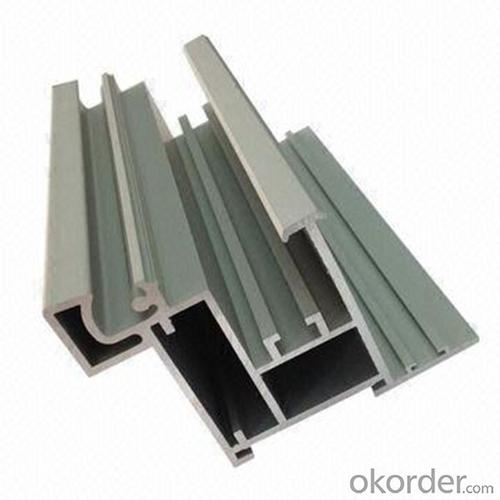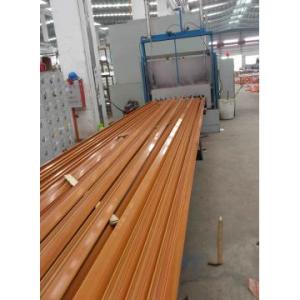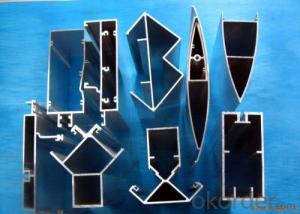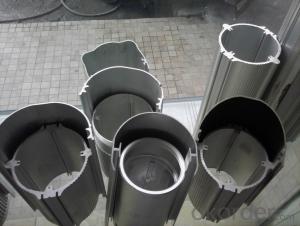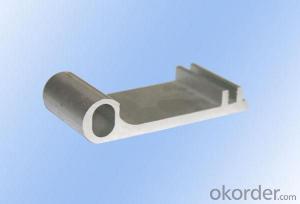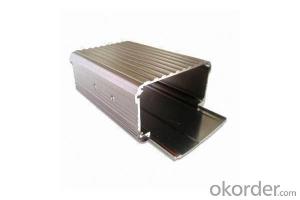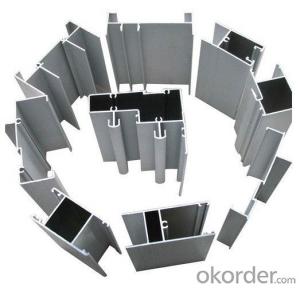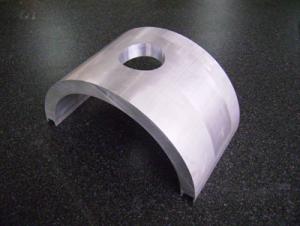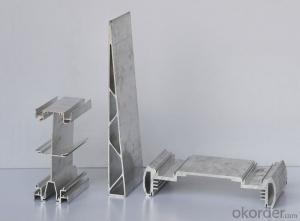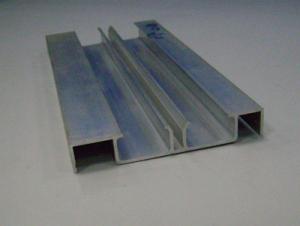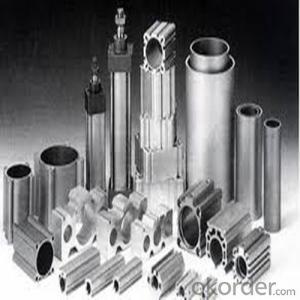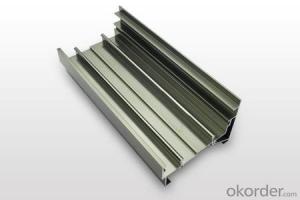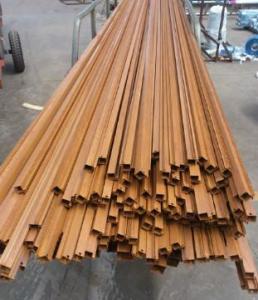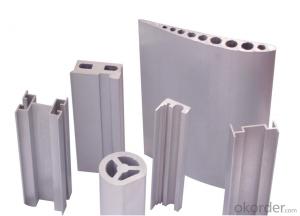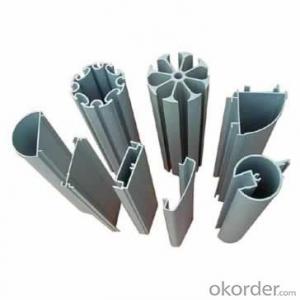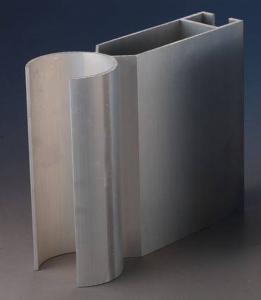Aluminum Extrusion Profiles Solidworks - Extruded Aluminum Profiles Prices Made in China
- Loading Port:
- Shanghai
- Payment Terms:
- TT OR LC
- Min Order Qty:
- 5 m.t.
- Supply Capability:
- 1000 m.t./month
OKorder Service Pledge
OKorder Financial Service
You Might Also Like
Specification
1. Specification of Extruded Aluminum Profiles Prices Made in China
Alloy | State | Tensile Strength δbMpa | Non-proportional Stretching Stress(δp0.2Mpa) | Stretching rate (δ%) | Pattern Thickness (mm) | HV | HW |
No Less Than | |||||||
6061 | T4/T6 | 180/265 | 110/245 | 16/8 | - | - | - |
6063 | T5/T6 | 160/205 | 110/180 | 8/8 | 0.8/- | 58/- | 8/- |
6063A | T5/T6 | 200,190/230,220 | 160,150/190,180 | 5,5/5,4 | 0.8,0.8/-,- | 65,65/-,- | 10,10/-,- |
2. Application of Extruded Aluminum Profiles Prices Made in China
wall cladding, ceilings, bathrooms, kitchens and balconies, shutters, doors,windows…
3. Feature of Extruded Aluminum Profiles Prices Made in China
Surface Quality :
Be free from Oil Stain, Dent, Inclusion, Scratches, Stain, Oxide Decoration, Breaks, Corrosion, Roll Marks, Dirt Streaks and other defect which will interfere with use,
Mochenical Property:
Chemical Composite and Mechanical Property
4. Certificate:
SGS and ROHS(if client request, paid by client), MTC(plant provided), Certificate of Origin(FORM A, FORM E, CO), Bureau Veritas and SGS (if client request, paid by client), CIQS certificate
5. Image of Extruded Aluminum Profiles Prices Made in China
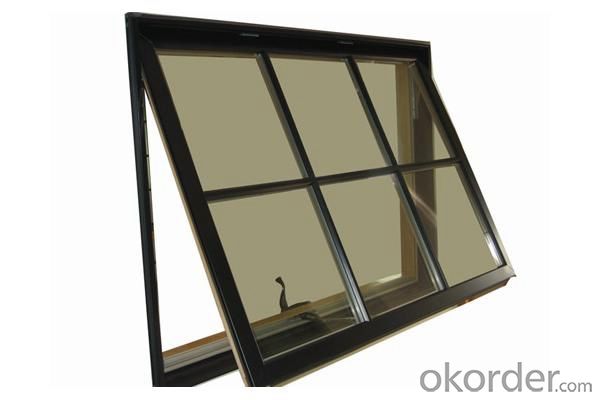
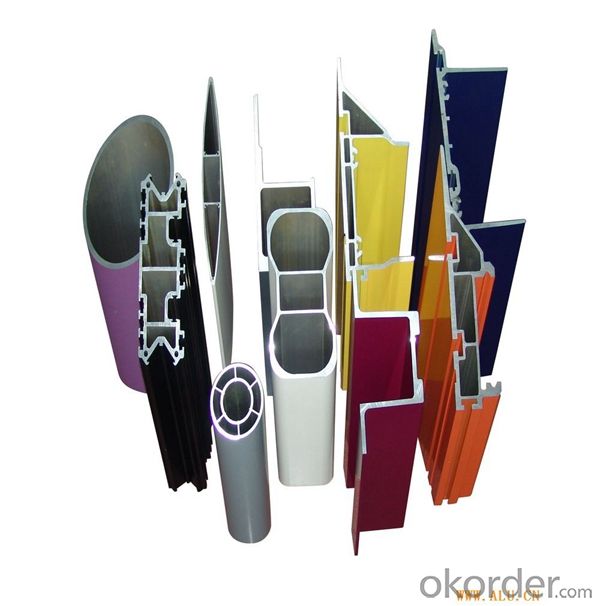
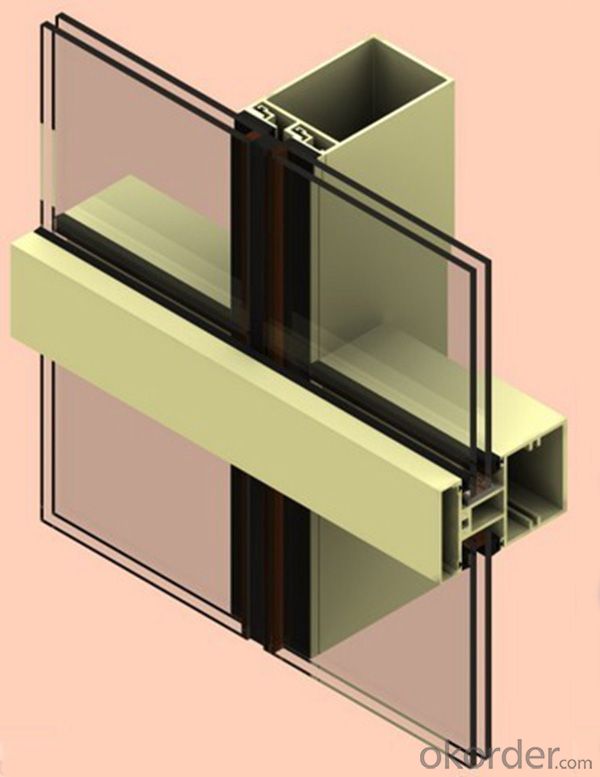
6. Package and shipping of Extruded Aluminum Profiles Prices Made in China
First, plastic cloth with drying agent inside; Second, Pearl Wool; Third, wooden cases with dry agent, fumigation wooden pallets, aluminum surface could cover blue PVC film
7. FAQ
Question 1: What is your MOQ?
We accept one ton per type for an order. But the detail we could negotiate.
Question 2: What is your normal terms of payment?
We always trade with you by T/T. But we also accept the L/C as you require.
Question 3: How many kinds of the surface treatment we can choose?
You could choose different color of powder coated. Anodized of black. matte silver, nature, champagne, bronze color. Mill finished. Wooden finished and printed.etc.
Question 4: Can you supply OEM services?
We offer OEM services for 17 years.
Question 5: How many days for opening the mould?
Normally about 10 days.According to the difficulty of your drawing.
Question 6: Can i choose the package what i want?
Yes, of course. We offer various kinds of package.e.g.PE foam. Shrink film. Wrapping paper.
But we would give you professional suggestion of package.
- Q: What are the advantages of utilizing aluminum profiles in construction projects in terms of environmental impact?
- <p>Aluminum profiles in construction offer several environmental benefits. They are highly recyclable, which reduces waste and conserves natural resources. Aluminum is lightweight, reducing transportation emissions. It also has a high strength-to-weight ratio, allowing for more efficient use of materials. Additionally, aluminum has excellent thermal conductivity, which can contribute to energy efficiency in buildings. Furthermore, aluminum production technology has advanced to reduce energy consumption and emissions during the manufacturing process. Overall, the use of aluminum profiles can lead to more sustainable and environmentally friendly construction practices.</p>
- Q: How do aluminum profiles handle extreme weather conditions?
- Aluminum profiles possess exceptional durability and resilience, making them highly adept at tackling extreme weather conditions. Their inherent resistance to corrosion allows them to endure harsh weather elements like heavy rain, snow, temperature fluctuations, and intense UV radiation without succumbing to deterioration or corrosion. A key characteristic of aluminum is its ability to form a protective oxide layer, known as aluminum oxide, on its surface. This layer acts as a natural barrier, shielding the metal from moisture, salt, and other corrosive agents found in the atmosphere. Consequently, aluminum profiles remain unaffected by rain or snow, and they do not rust or corrode like other metals. Additionally, aluminum's thermal conductivity enables it to rapidly dissipate heat, preventing any harm caused by extreme temperature changes. Regardless of exposure to scorching heat or freezing cold, aluminum profiles undergo minimal expansion and contraction, which helps maintain their structural integrity and prevents warping or cracking. Furthermore, aluminum profiles can withstand high wind loads, making them suitable for areas prone to hurricanes, tornadoes, or strong gusts. Their lightweight yet sturdy composition allows them to endure significant pressure without bending or breaking. Regarding UV radiation, aluminum profiles exhibit excellent resistance to fading and discoloration. They can effectively withstand prolonged exposure to sunlight without losing their original color or surface finish. This renders them an ideal choice for outdoor applications, such as windows, doors, and facades, where they retain their visual appeal and structural soundness even in extreme weather conditions. In summary, aluminum profiles display remarkable durability, corrosion resistance, thermal stability, and resistance to UV radiation, enabling them to effectively handle and withstand the challenges presented by extreme weather conditions.
- Q: Is it possible to recycle aluminum profiles repeatedly without a substantial loss in their quality or functionality?
- <p>Yes, aluminum profiles can be recycled multiple times without significant degradation in performance. Aluminum is highly recyclable, and the recycling process does not compromise its properties. In fact, recycled aluminum maintains the same strength, durability, and malleability as new aluminum. This makes it an environmentally friendly material, as it reduces the need for mining new aluminum and conserves resources.</p>
- Q: What are the water-resistant properties of aluminum profiles?
- Aluminum profiles possess excellent water-resistant properties due to their natural oxide layer that forms on the surface. This oxide layer acts as a protective barrier, preventing the penetration of water molecules and inhibiting corrosion. Additionally, aluminum profiles can be further enhanced with various surface treatments such as anodizing, powder coating, or painting, which provide an additional layer of protection against water damage. These treatments not only enhance the aesthetic appeal of the profiles but also increase their resistance to water, making them suitable for outdoor applications or areas exposed to high humidity. Moreover, aluminum profiles have inherent structural integrity and dimensional stability, even in wet environments, making them a reliable choice for water-resistant applications such as windows, doors, and façade systems.
- Q: This question asks about the various techniques used to install aluminum profiles in construction projects.
- <p>There are several methods for installing aluminum profiles in construction: 1. Direct Fixing: Using screws or bolts directly into the aluminum profile. 2. Mortise and Tenon Joints: Joining profiles with a slot and a protruding part that fits into it. 3. Welding: Joining aluminum profiles using heat to melt and fuse them together. 4. Adhesive Bonding: Using adhesives to bond aluminum profiles together. 5. Mechanical Fasteners: Using nuts, bolts, and other fasteners to join profiles. 6. Clipping: Attaching profiles using clips or clamps. 7. Slot and Pin: A system where a pin fits into a slot in the profile. Each method has its advantages and is chosen based on the specific requirements of the construction project, such as load-bearing needs, aesthetic considerations, and ease of installation.</p>
- Q: Are there any special considerations for installing aluminum profiles?
- Yes, there are several special considerations for installing aluminum profiles. Firstly, it is important to ensure that the profiles are properly aligned and leveled during installation. This is crucial for achieving a seamless and professional-looking finished product. Using a laser level or a spirit level can help in this process. Secondly, it is essential to use the correct type and size of fasteners when installing aluminum profiles. Stainless steel or aluminum screws or rivets are commonly used, as they are resistant to corrosion and provide a secure hold. Additionally, it is important to pre-drill holes in the profiles to prevent cracking or splitting. Another consideration is the expansion and contraction of aluminum due to temperature changes. Aluminum has a high coefficient of thermal expansion, so it is necessary to leave enough space for the profiles to expand and contract without causing damage. This can be achieved by leaving a small gap between the profiles during installation. Furthermore, it is important to take into account the weight of the profiles and the load they will be subjected to. If the profiles are intended to support heavy loads or structural components, additional support or reinforcement may be required. Lastly, it is crucial to follow the manufacturer's instructions and guidelines for installation. Each type of aluminum profile may have specific requirements, such as recommended installation techniques or maximum spans between supports. Adhering to these guidelines will ensure a safe and secure installation. In conclusion, installing aluminum profiles requires careful attention to alignment, fasteners, expansion and contraction, load considerations, and following manufacturer's instructions. By considering these factors, one can ensure a successful and long-lasting installation.
- Q: Can aluminum profiles be used for conveyor belts?
- Indeed, conveyor belts can indeed utilize aluminum profiles. Aluminum, a material known for its versatility and lightness, finds widespread use in various industrial settings, including conveyor systems. The utilization of aluminum profiles for conveyor belts provides numerous benefits, including a high strength-to-weight ratio, resistance to corrosion, and effortless customization. These profiles can be easily manipulated into diverse shapes and sizes to cater to the specific requirements of the conveyor system. Moreover, opting for aluminum profiles proves to be an economical decision as they necessitate minimal maintenance and boast a longer lifespan compared to alternative materials. Consequently, the durability, versatility, and cost-effectiveness of aluminum profiles render them a suitable choice for conveyor belts.
- Q: How do aluminum profiles perform in electrical insulation applications?
- Aluminum profiles do not perform well in electrical insulation applications as aluminum is a good conductor of electricity. It is not suitable for providing insulation and can potentially pose a risk of electrical conductivity.
- Q: Can aluminum profiles be used for curtain walls?
- Yes, aluminum profiles can be used for curtain walls. Aluminum is a popular material choice for curtain wall systems due to its lightweight, durability, and corrosion resistance. It offers flexibility in design, ease of installation, and can accommodate large glass panels, making it an ideal choice for modern architectural designs.
- Q: This question asks for methods to protect aluminum profiles from corrosion and damage during the processes of transportation and storage.
- <p>To prevent corrosion and damage to aluminum profiles during transportation and storage, follow these guidelines: 1. Keep aluminum profiles dry and clean. Moisture and dirt can accelerate corrosion. 2. Use protective packaging, such as plastic wrap or padded covers, to shield profiles from physical damage and moisture. 3. Store profiles in a cool, dry place away from direct sunlight and corrosive substances. 4. Stack profiles with appropriate padding between layers to prevent scratching. 5. Avoid overloading during transportation and ensure secure fastening to prevent movement and potential damage. 6. Regularly inspect stored profiles for signs of corrosion or damage and address any issues promptly.</p>
Send your message to us
Aluminum Extrusion Profiles Solidworks - Extruded Aluminum Profiles Prices Made in China
- Loading Port:
- Shanghai
- Payment Terms:
- TT OR LC
- Min Order Qty:
- 5 m.t.
- Supply Capability:
- 1000 m.t./month
OKorder Service Pledge
OKorder Financial Service
Similar products
Hot products
Hot Searches
Related keywords


